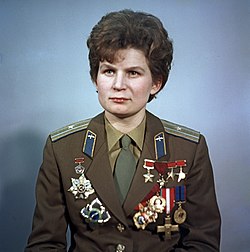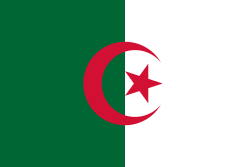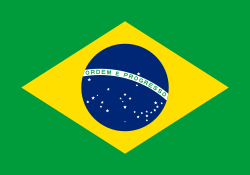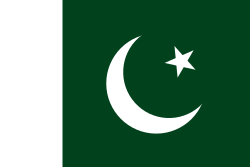Vostokprogrammet
| Den här artikeln behöver källhänvisningar för att kunna verifieras. (2023-07) Åtgärda genom att lägga till pålitliga källor (gärna som fotnoter). Uppgifter utan källhänvisning kan ifrågasättas och tas bort utan att det behöver diskuteras på diskussionssidan. |
- För andra betydelser, se Vostok (olika betydelser).
| Vostokprogrammet | |
 Jurij Gagarin | |
| Land | Sovjetunionen |
|---|---|
| Syfte | Första människan i omloppsbana runt jorden |
| Status | Avslutat |
| Historik | |
| Första bemannade rymdfärd | 12 april 1961 |
| Plats(er) för uppskjutning | Kosmodromen i Bajkonur |
| Farkostinformation | |
| Farkosttyp | Kapsel |
| Bemannad(e) farkost(er) | Vostok |
| Besättningskapacitet | 1 st |
| Raket(er) | Vostok (raket) |
Vostokprogrammet var det första bemannade rymdprogrammet i Sovjetunionens rymdprogram. Sex bemannade rymdfarkoster skickades upp mellan 1961 och 1963. Den farkost man använde för flygningarna hette Vostok.
Rymdflygningarna
| Flygning | Besättning | Uppskjutning (UTC) | Landning (UTC) | Tid |
|---|---|---|---|---|
| Vostok 1 | Jurij Gagarin | 12 april 1961, 06:07 | 12 april 1961, 07:55 | 1 timme, 48 minuter |
| Första människan i rymden. | ||||
| Vostok 2 | German Titov | 6 augusti 1961, 05:00 | 7 augusti 1961, 07:18 | 1 dag, 1 timme, 18 minuter |
| Första flygningen som varade längre än ett dygn. | ||||
| Vostok 3 | Andrijan Nikolajev | 11 augusti 1962, 08:30 | 15 augusti 1962, 06:52 | 3 dagar, 22 timmar, 22 minuter |
| Första gången två bemannade farkoster var i omloppsbana samtidigt. | ||||
| Vostok 4 | Pavel Popovitj | 12 augusti 1962, 08:02:33 | 15 augusti 1962, 06:59 | 2 dagar, 22 timmar, 56 minuter |
| Första gången två bemannade farkoster var i omloppsbana samtidigt. | ||||
| Vostok 5 | Valerij F. Bykovskij | 14 juni 1963, 11:58:58 | 19 juni 1963, 11:06 | 4 dagar, 23 timmar, 7 minuter |
| Längsta soloflygningen i rymdfartens historia. | ||||
| Vostok 6 | Valentina Teresjkova | 16 juni 1963, 09:29:52 | 19 juni 1963, 08:20 | 2 dagar, 22 timmar, 50 minuter |
| Första kvinnan i rymden. | ||||
Se även
| ||||||||||||||||
| ||||||||||||||||||||||
Media som används på denna webbplats
Författare/Upphovsman: Tkgd2007, Licens: CC BY-SA 3.0
A new incarnation of Image:Question_book-3.svg, which was uploaded by user AzaToth. This file is available on the English version of Wikipedia under the filename en:Image:Question book-new.svg
The Flag of Europe is the flag and emblem of the European Union (EU) and Council of Europe (CoE). It consists of a circle of 12 golden (yellow) stars on a blue background. It was created in 1955 by the CoE and adopted by the EU, then the European Communities, in the 1980s.
The CoE and EU are distinct in membership and nature. The CoE is a 47-member international organisation dealing with human rights and rule of law, while the EU is a quasi-federal union of 27 states focused on economic integration and political cooperation. Today, the flag is mostly associated with the latter.
It was the intention of the CoE that the flag should come to represent Europe as a whole, and since its adoption the membership of the CoE covers nearly the entire continent. This is why the EU adopted the same flag. The flag has been used to represent Europe in sporting events and as a pro-democracy banner outside the Union.bendera Indonesia
Flag of Iran. The tricolor flag was introduced in 1906, but after the Islamic Revolution of 1979 the Arabic words 'Allahu akbar' ('God is great'), written in the Kufic script of the Qur'an and repeated 22 times, were added to the red and green strips where they border the white central strip and in the middle is the emblem of Iran (which is a stylized Persian alphabet of the Arabic word Allah ("God")).
The official ISIRI standard (translation at FotW) gives two slightly different methods of construction for the flag: a compass-and-straightedge construction used for File:Flag of Iran (official).svg, and a "simplified" construction sheet with rational numbers used for this file.
Flag of Israel. Shows a Magen David (“Shield of David”) between two stripes. The Shield of David is a traditional Jewish symbol. The stripes symbolize a Jewish prayer shawl (tallit).
MAVEN at Mars, Artist's Concept. This artist's concept depicts NASA's Mars Atmosphere and Volatile EvolutioN (MAVEN) spacecraft near Mars. MAVEN is in development for launch in 2013 and will be the first mission devoted to understanding the Martian upper atmosphere. The mission's principal investigator is Bruce Jakosky from the Laboratory for Atmospheric and Space Physics at the University of Colorado.
The goal of MAVEN is to determine the role that loss of atmospheric gas to space played in changing the Martian climate through time. MAVEN will determine how much of the Martian atmosphere has been lost over time by measuring the current rate of escape to space and gathering enough information about the relevant processes to allow extrapolation backward in time.
NASA Goddard Space Flight Center in Greenbelt, Md. manages the project and will also build some of the instruments for the mission. In addition to the principal investigator coming from CU-LASP, the university will provide science operations, build instruments, and lead education/public outreach. Lockheed Martin of Littleton, Colo., is building the spacecraft and will perform mission operations. The University of California-Berkeley Space Sciences Laboratory is also building instruments for the mission. NASA's Jet Propulsion Laboratory, Pasadena, Calif., will provide navigation support, the Deep Space Network, and the Electra telecommunications relay hardware and operations.
For more information about MAVEN, visit www.nasa.gov/maven.(c) RIA Novosti archive, image #612748 / Alexander Mokletsov / CC-BY-SA 3.0
“Valentina Tereshkova”. Valentina Tereshkova, pilot-cosmonaut, first female cosmonaut, Hero of the USSR. Pictured as a Major of the Soviet Air Forces.
Författare/Upphovsman: Roryjoem, Licens: CC BY-SA 3.0
A simple diagram of the Vostok spacecraft.
A replica of Sputnik 1, the first artificial satellite in the world to be put into outer space: the replica is stored in the National Air and Space Museum.
Jurij Gagarin hälsar på pressen under sitt besök i Malmö 1964.

































